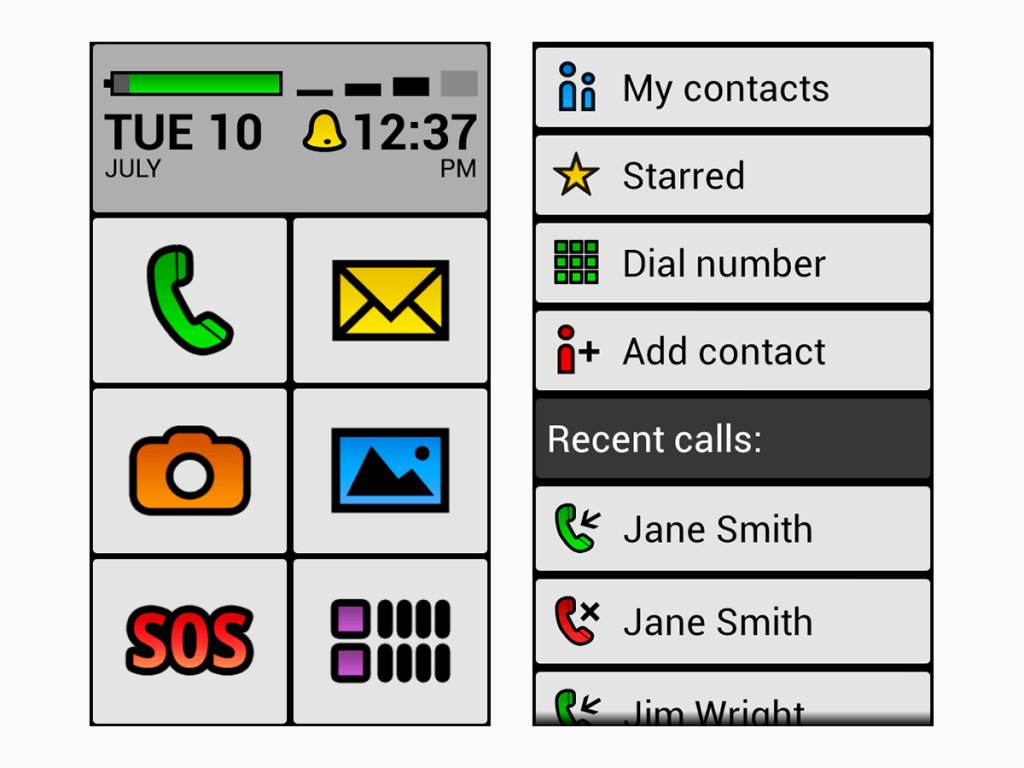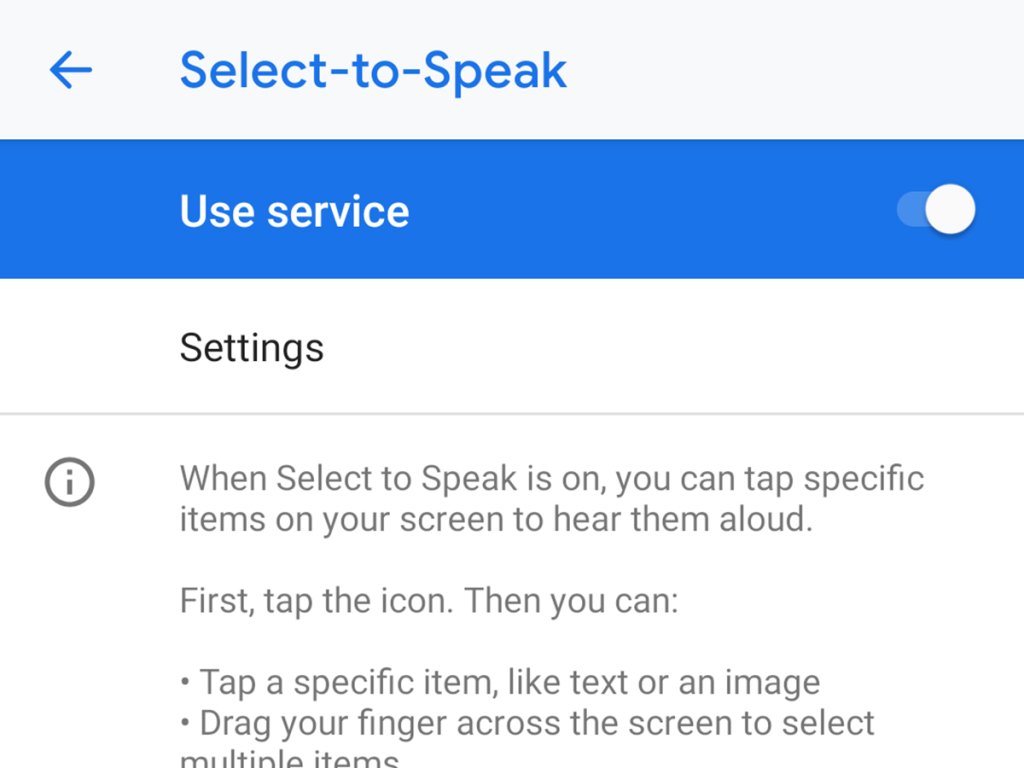

This story has been updated. It was originally published on November 18, 2018.
For many of us, navigating a Samsung Galaxy’s menus or an iPhone’s settings app seems like second nature. But not everyone feels the same way.
Some people—especially those new to smartphones—find the interface confusing rather than intuitive, and things get more complicated when you account for visual impairment and limited mobility. Elderly users, for example, may have trouble seeing text and images, as well as pressing on-screen buttons.
It doesn’t have to be this way. By tweaking a device’s settings, you can make text easier to read, simplify the controls, and interact with the screen vocally instead of manually. Here’s how to make a smartphone much more accessible.
Make text more readable
To render screens more readable, you can boost the size of the text. But to really make words and objects more visible, you should also increase the contrast, which will make colors more distinct and icons more well-defined.
On iOS, head to Settings > Accessibility > Display & Text Size. There are many options here, including the ability to make text bold, decrease the intensity of bright colors, and reduce the transparency of overlays to make iOS visuals more clear. You can turn most of these on or off with simple toggle switches, but some offer more granular controls. For example, enter the Larger Text submenu and use a slider to increase the text size across all apps, or activate another switch to access even bigger letters. If you’ve upgraded to iOS 15, you can even use a widget to adjust lettering inside individual apps.
On Android, you’ll find a similar set of options through the Settings > Accessibility menu. Head to Text and display, and then Font size to adjust how much screen room you want each word to take up. This change will apply to all of your apps. Just below that option, play with Display size to adjust the size of buttons, icons, and other objects. To adjust contrast, switch on High contrast text at the end of the list. Android will now make text clearer and easier to read with tricks like adding a black outline to white letters against colorful backgrounds. To make text even easier to read, make the letters pop even more by toggling the switch next to Bold text. While you’re here, you can also turn off Android animations and invert colors within apps and menus.
One of Android’s handiest tricks is an on-screen magnifier, which you enable from the Accessibility menu. Just tap Magnification and switch on the Magnification shortcut. Once it’s on, you can hit a button in the lower-right corner of your screen and use two fingers to move and adjust the magnifying window anywhere on the screen.
Simplify the interface

Instead of changing individual settings, you can completely revamp an Android device to make it easier to navigate. That’s because this operating system supports apps called launchers, which essentially reskin the entire interface of the phone, including home screens, the app drawer, and settings menus. Some launchers aim to serve seniors with streamlined menus and options, large text, and bright colors for easy readability.
BIG Launcher ($11 for Android) serves as a good example. It includes chunky, clearly-labeled buttons that are easy to tap, quick access to favorite apps and contacts, and automatically makes the text in basic apps (such as the text message client) larger. If you want to see what this will look like before paying, you can try a free version of the app with limited features.
[Related: A beginner’s guide to using Android]
If you own a Samsung phone, this stripped-down version of Android actually comes with a built-in Easy Mode that will simplify the interface without a separate app. On a Galaxy phone, turn it on and off again in Settings > Display > Easy Mode.
Apple, however, doesn’t allow apps to take so much control over the iOS interface. Although you won’t find any equivalent launchers for iPhones, you can add widgets to your home pages that provide more customizable access and larger icons for certain apps and tools. To see what’s available, long-press on an empty portion of your home screen and tap the plus icon in the top left corner of the screen. You’ll see a number of suggested widgets, but you can also search for specific ones with the search bar. If that’s not enough, many of the other tweaks on this list will also make the default interface much easier to use.
Enable voice control
Even with help from magnifiers and over-size buttons, tapping away at a touchscreen can get tougher as we age, particularly if we lose manual dexterity. That’s one of the reasons every handset on the market now comes with some form of voice-controlled digital assistant.
For iPhones, Siri comes built-in. From Settings > Siri & Search, enable both Listen for “Hey Siri” and Allow Siri When Locked. Once you do, you can call out “Hey Siri,” followed by your command—whether or not the screen happens to be locked. For instance, you might try saying, “Hey Siri, text [contact name],” or “Hey Siri, what will the weather be like tomorrow?” Apple has a full list of commands here.
The Google Assistant might be built into your Android device, but if it isn’t, you can download the app for both Android and iOS. On an iPhone, you have to actually open the app to use Google Assistant’s voice control. But on Android, you can launch a voice command by saying “Hey Google” or “OK Google” even when your phone is locked. To enable this, go to Settings > Google > Settings for Google apps > Search, Assistant & Voice > Settings > Google Assistant. On this menu, go to Hey Google & Voice Match to teach your phone how to recognize your voice. As with Siri, you can try “Hey Google, send a text to [contact name],” or “Hey Google, what’s the time in Sydney?”. The full list of commands is here.
[Related: Simplify your life by creating routines for Alexa, Siri, and Google Assistant]
If you don’t get along with Siri or Google Assistant, enlist the help of another digital assistant. Samsung’s Bixby comes with Galaxy devices, while Amazon’s Alexa is also available on Android and iOS.
Listen to text

If you’ve tried adjusting text size and contrast, but still have trouble reading things on your phone, you can have the device speak the words out loud. This can be really helpful for people who struggle to read a screen, but it’s also great for those who want to save their eyes from strain.
On an Android device, return to Settings > Accessibility and enable Select-to-Speak, a mode where you tap on-screen text to hear it aloud. When you turn the switch on, the accessibility button will appear in the lower-right corner of your screen—you’ll need to tap on it every time you want your phone to read back something specific on the screen. Open the left-pointing arrow on the button to pause Select-to-Speak, and use the plus and minus buttons to increase the speed. Android also has the TalkBack feature (also available on the Accessibility menu), where the phone automatically reads out all on-screen text and menu options.
To enable a similar feature on iOS, go to Settings > Accessibility > VoiceOver and turn the toggle switch to On. Now your iPhone will automatically read out any text that appears on screen. From the same menu, you can adjust the reading speed, as well as other options, like whether the device will read notifications aloud.
For both operating systems, once you turn on the audio, you will hear the text from all of your apps, at least until you switch the setting back off. To reduce the amount of noise, you might opt to turn on reading for individual apps, instead of the entire system. For example, read-it-later app Pocket (for Android and iOS) will read a saved article when you tap the headphones button in the toolbar.
On an iPhone, check out NaturalReader Text To Speech (free or $10), which will read short documents, PDFs, and ebooks for free, although it charges $10 for audio longer than three minutes. For your web browsing, Speech Central (free or $8), will pull recent headlines to read out loud, free for a few stories per day but $6 to get more articles.
On Android, SayIt (free) will read almost any text, article, or website. Voice Aloud Reader (free) also covers documents and websites, and it will save audio recordings to your phone.
Get help with real-world reading
Now that your smartphone has become easier to manage, it can make the rest of the world more accessible as well. Case in point: Its built-in flashlight and camera can illuminate menus in dimly-lit restaurants and clarify hard-to-read text on other documents.
The flashlight is easy to activate: On modern iPhones, swipe down from the top right. On models that predate the iPhone X, swipe up from the bottom. Then, on all iOS devices, tap the flashlight button to turn it on and hold it to change the brightness. On Android, swipe down from the top with two fingers, then tap the flashlight button.
If you need something a little more advanced, try EyeReader ($2 for iOS). It turns the flashlight on, while simultaneously using your phone’s camera as a magnifier. This makes viewing books, menus, and other documents doubly clear. On Android, a similar app is Magnifier Plus with Flashlight (free with ads or $2 without ads). Again, it zooms in on any text in front of your phone’s camera, while illuminating the words. If the brightness gets annoying, both of these apps let you disable the flashlight.